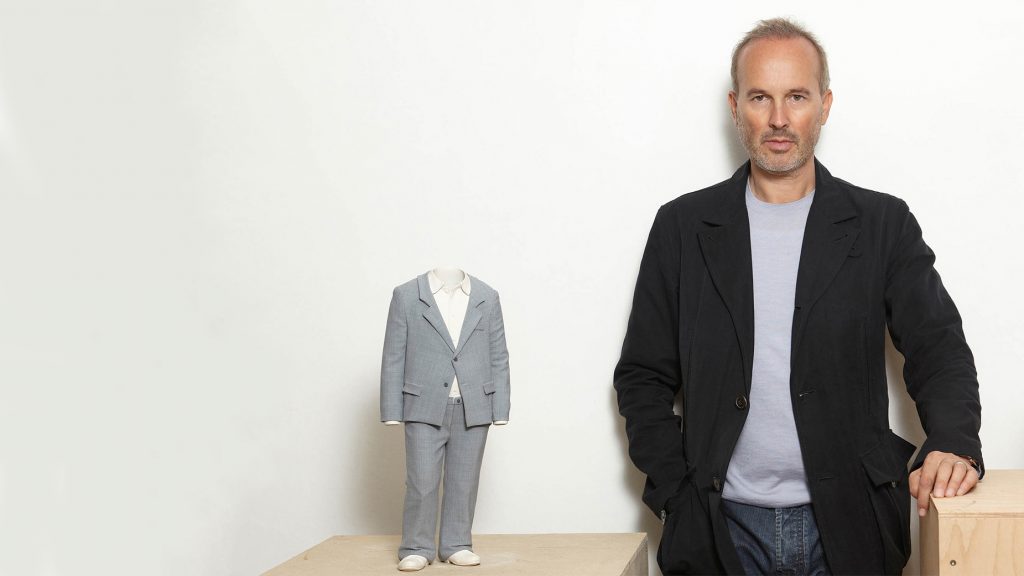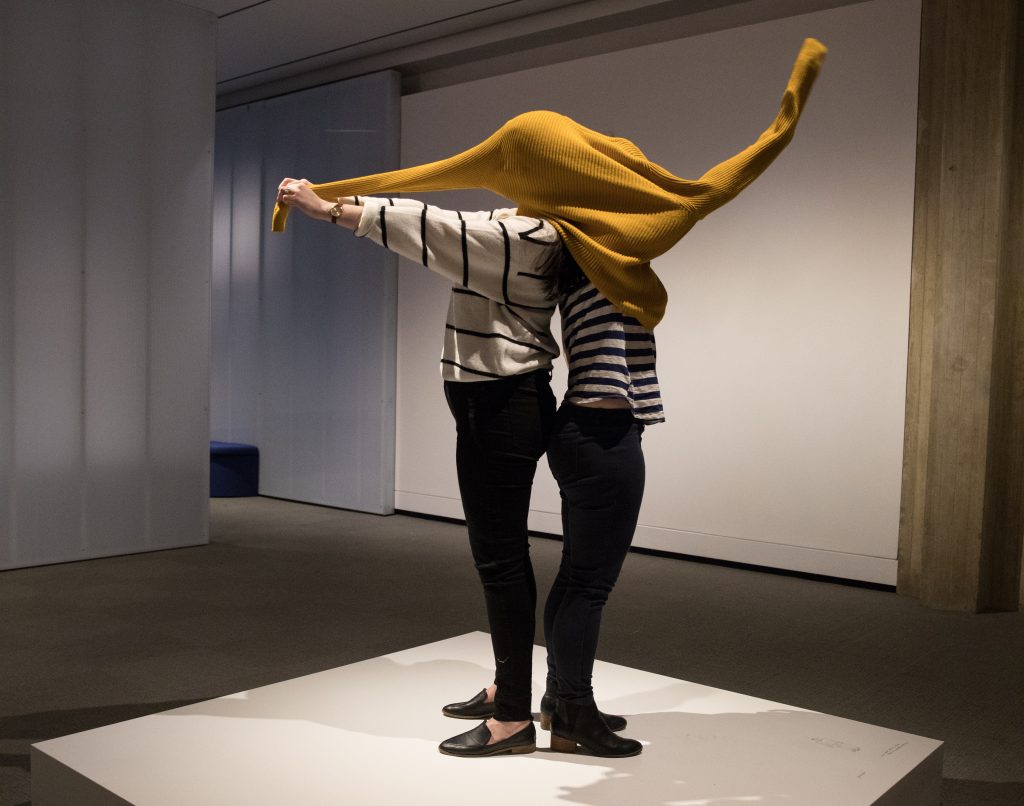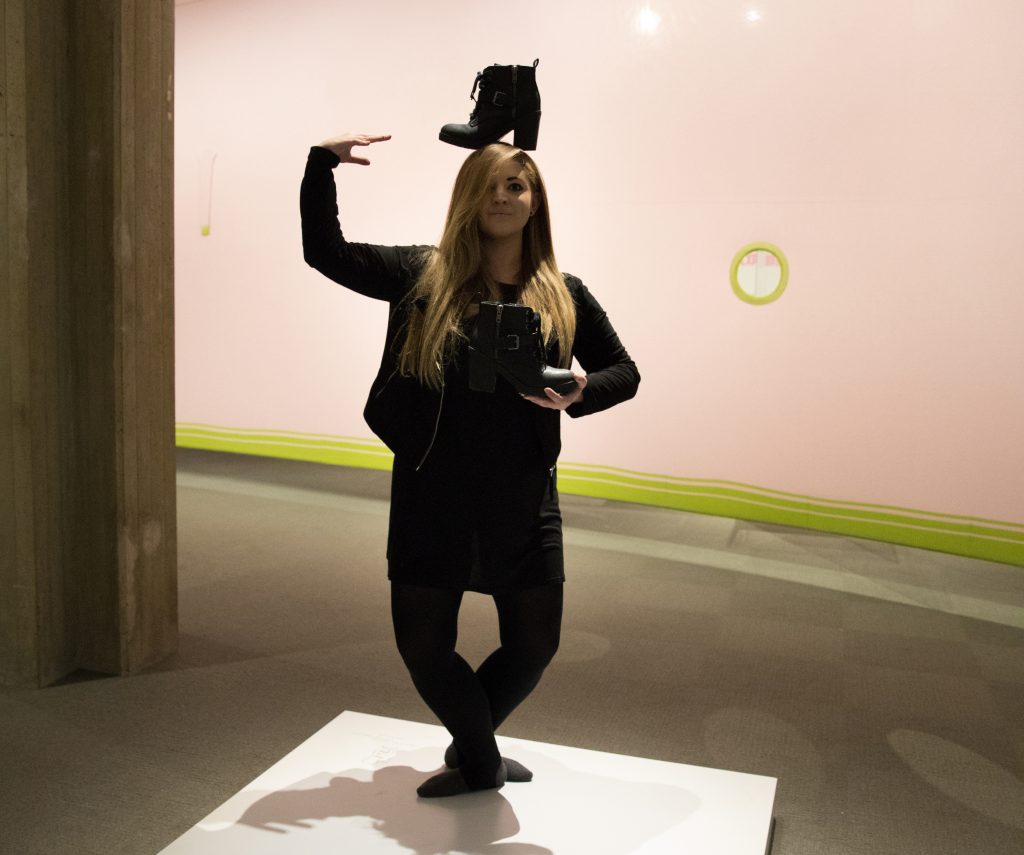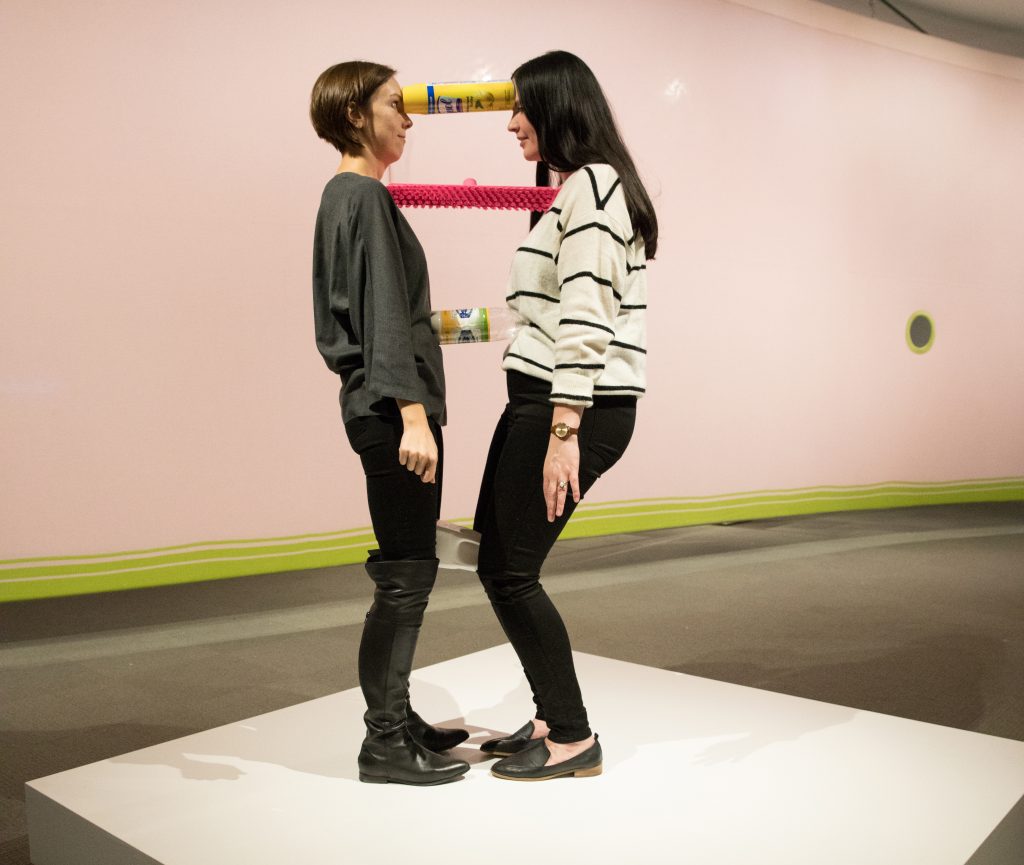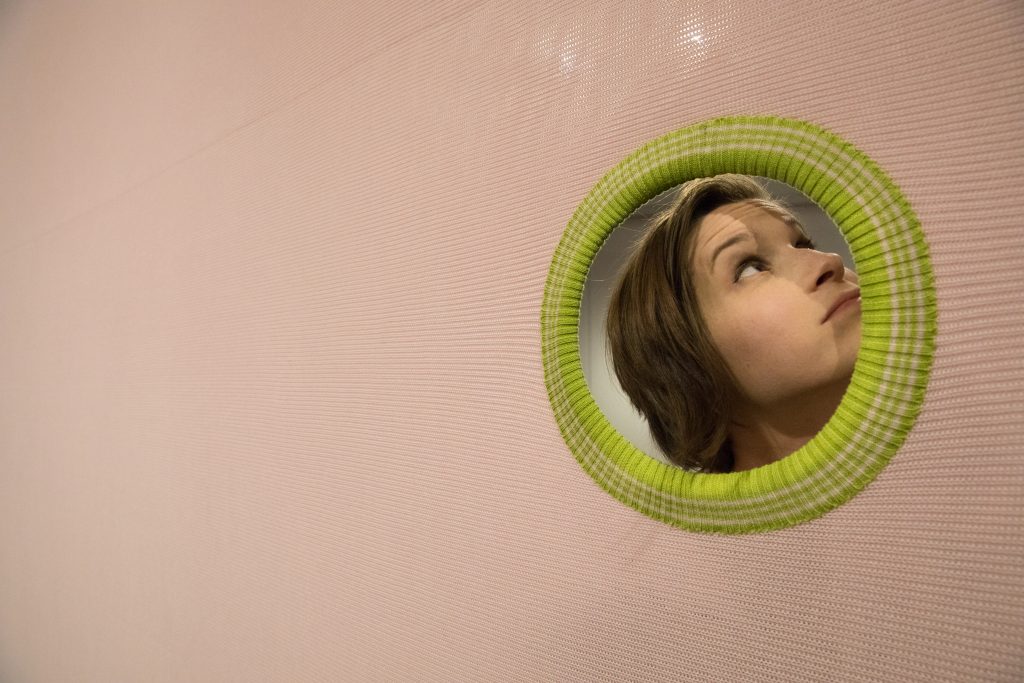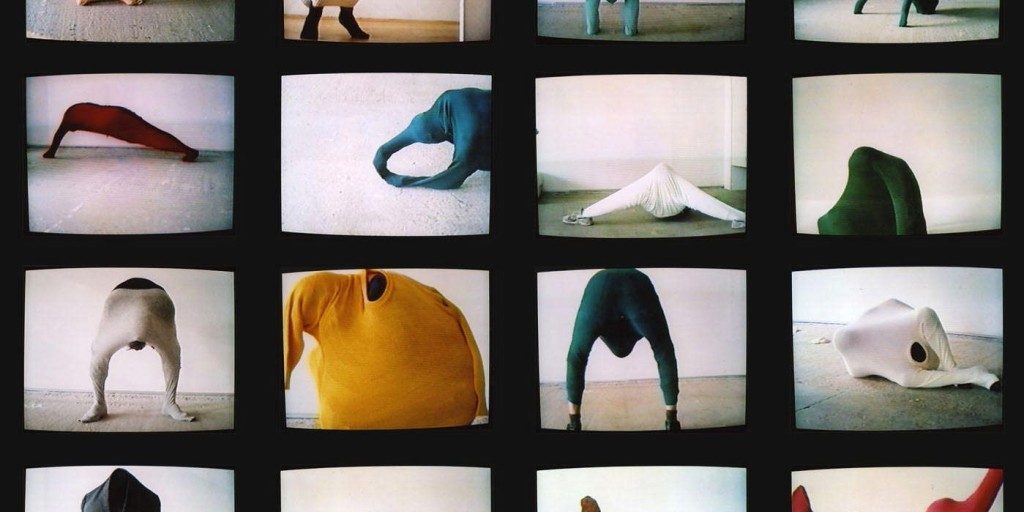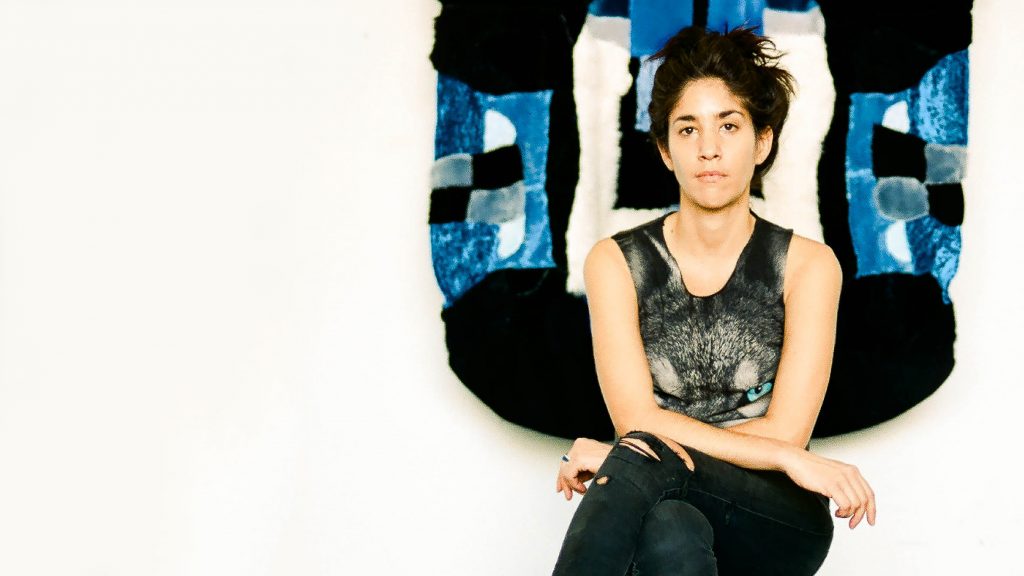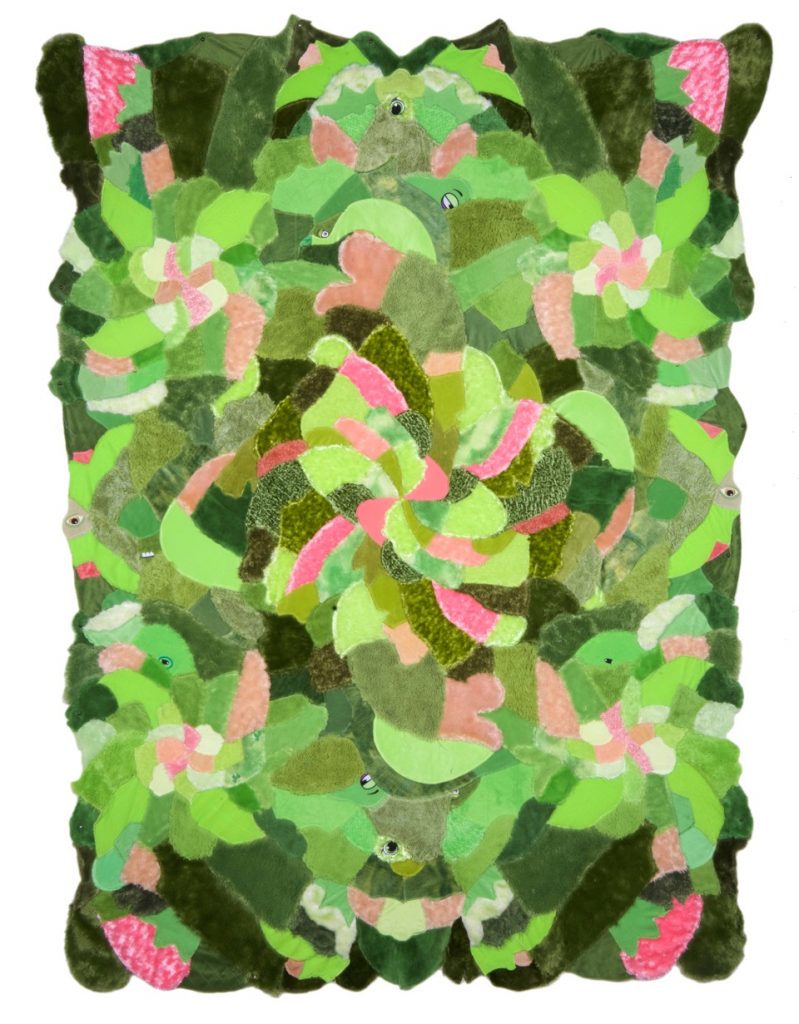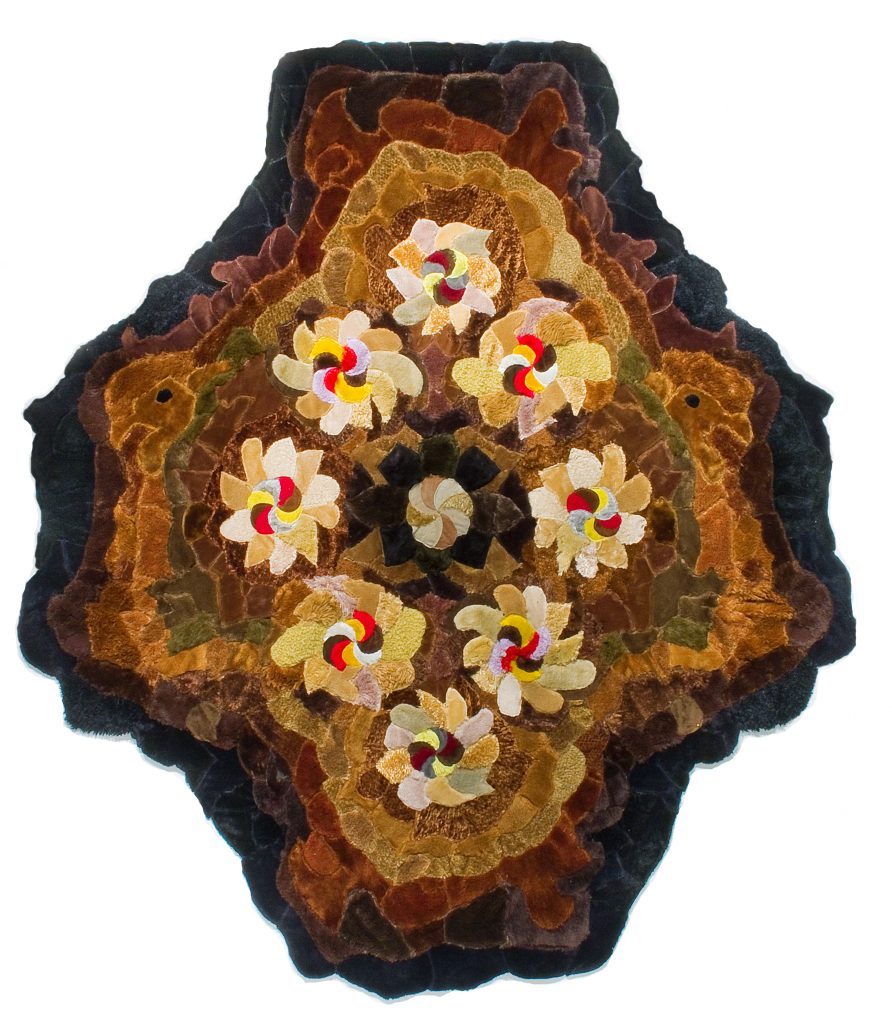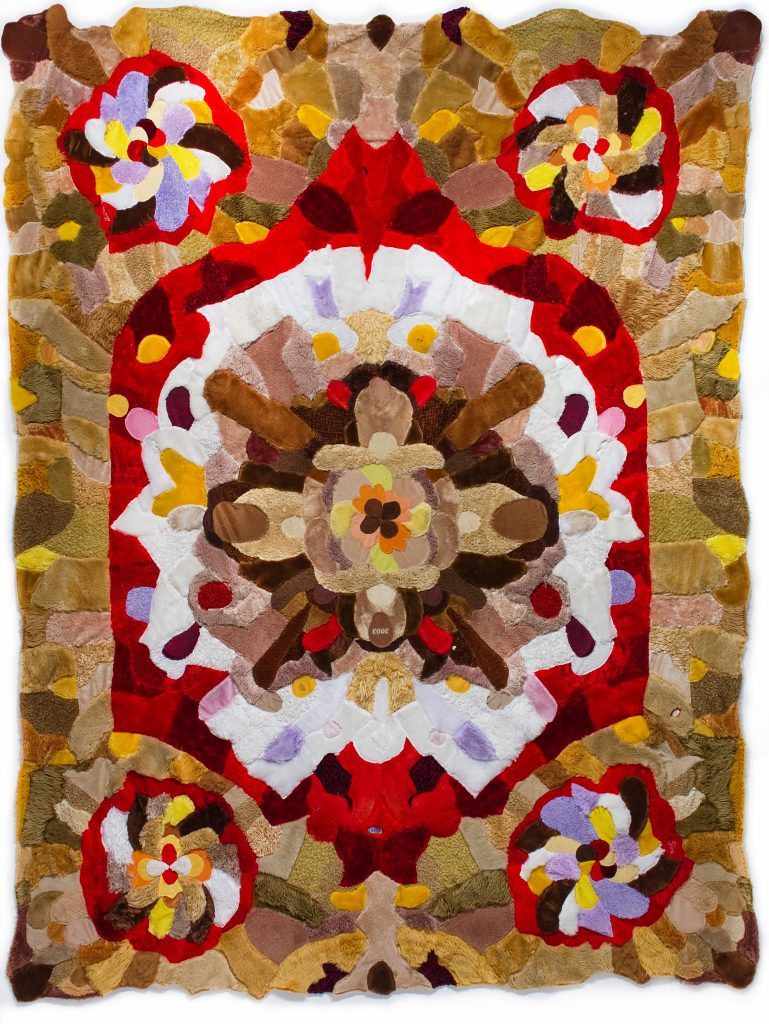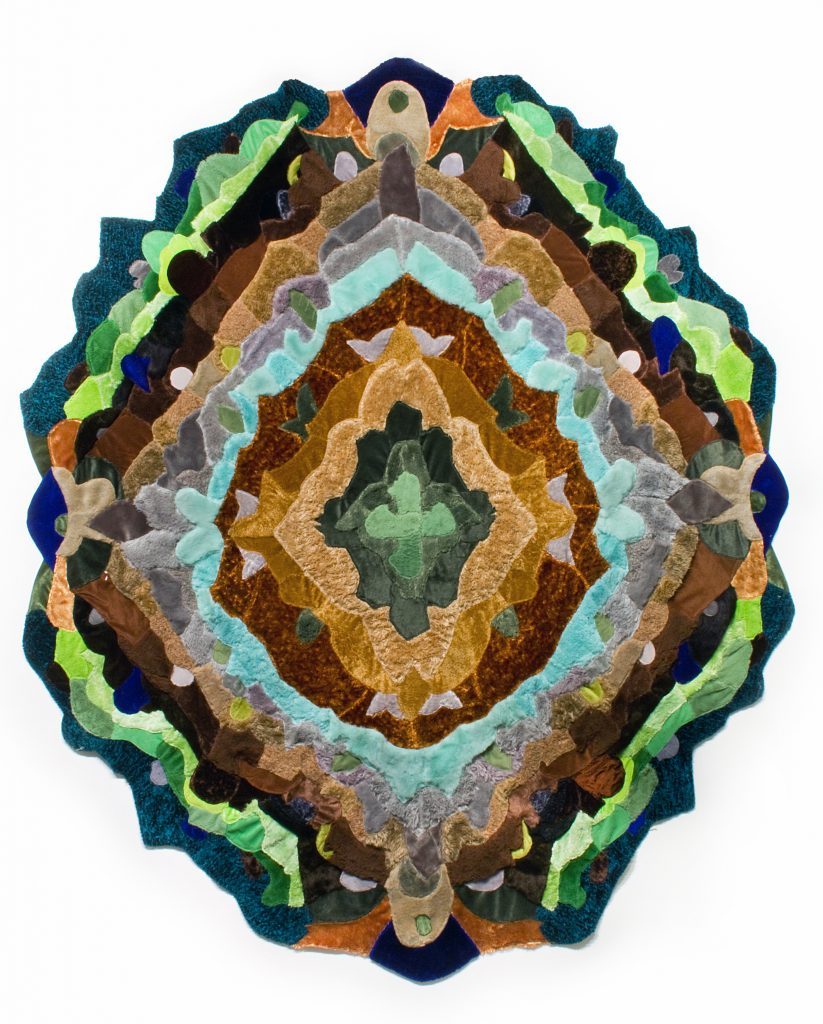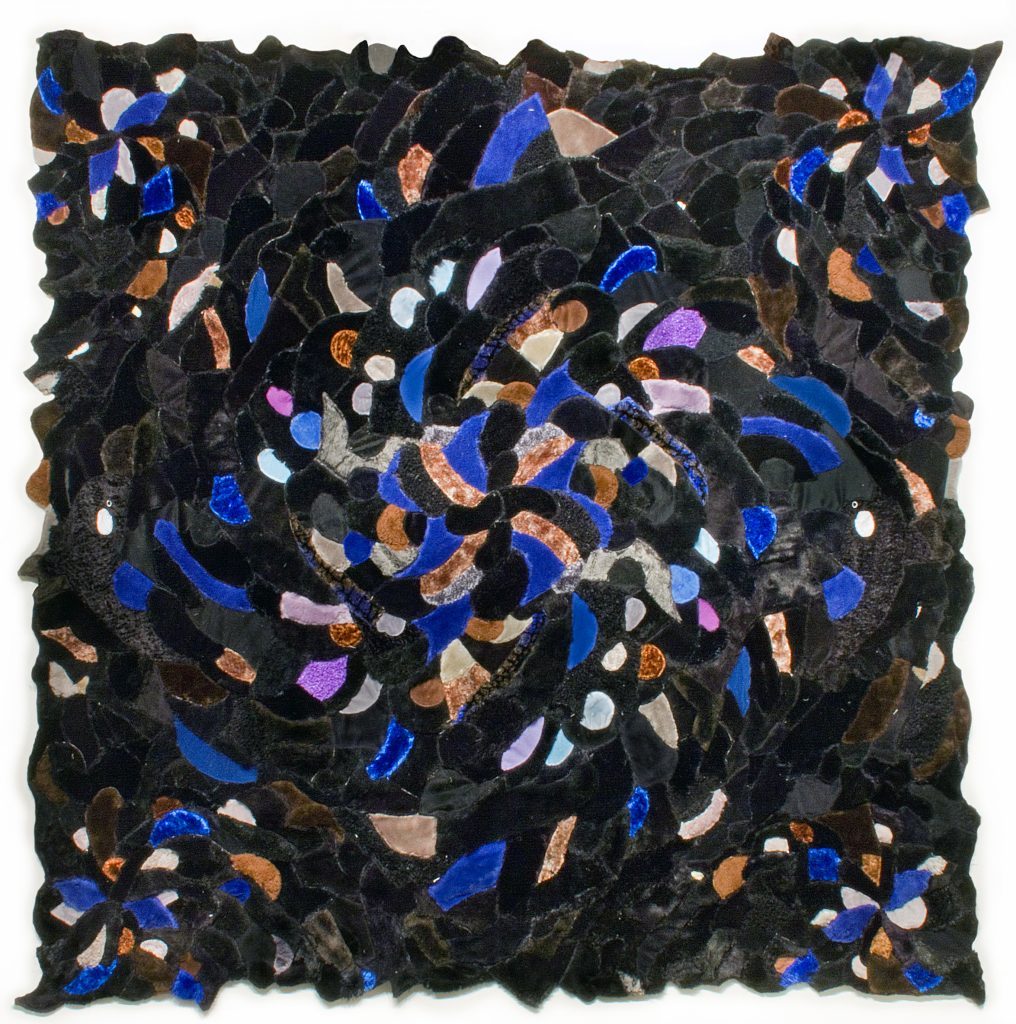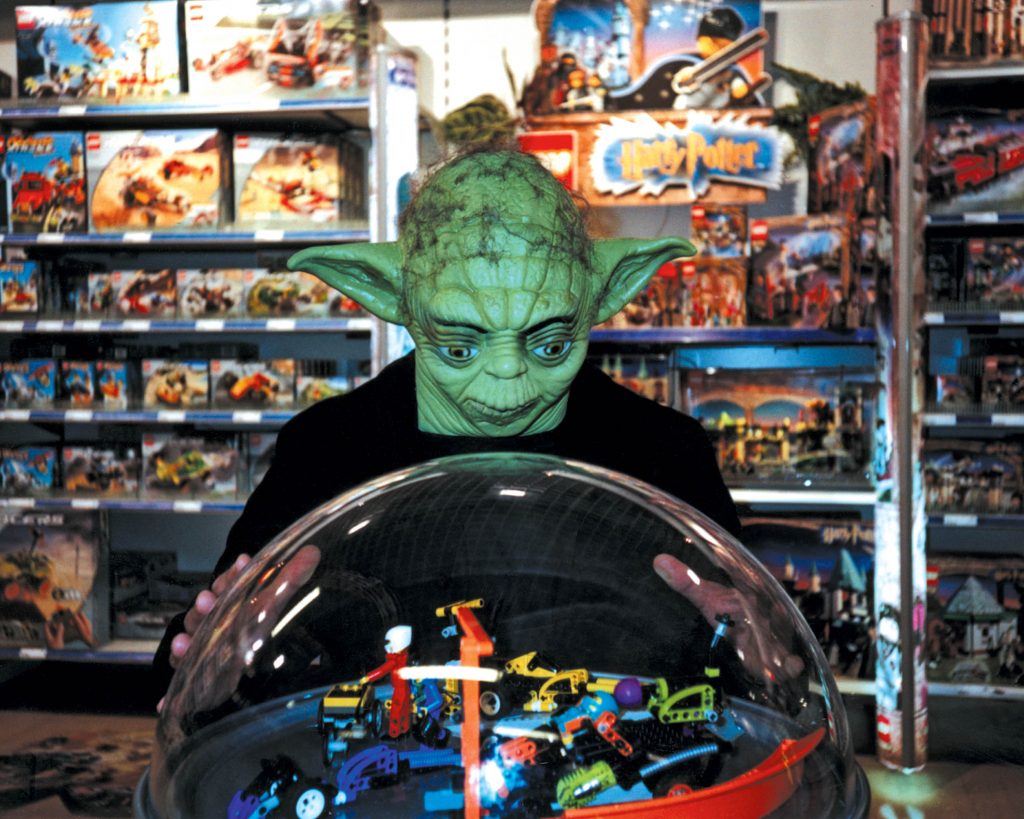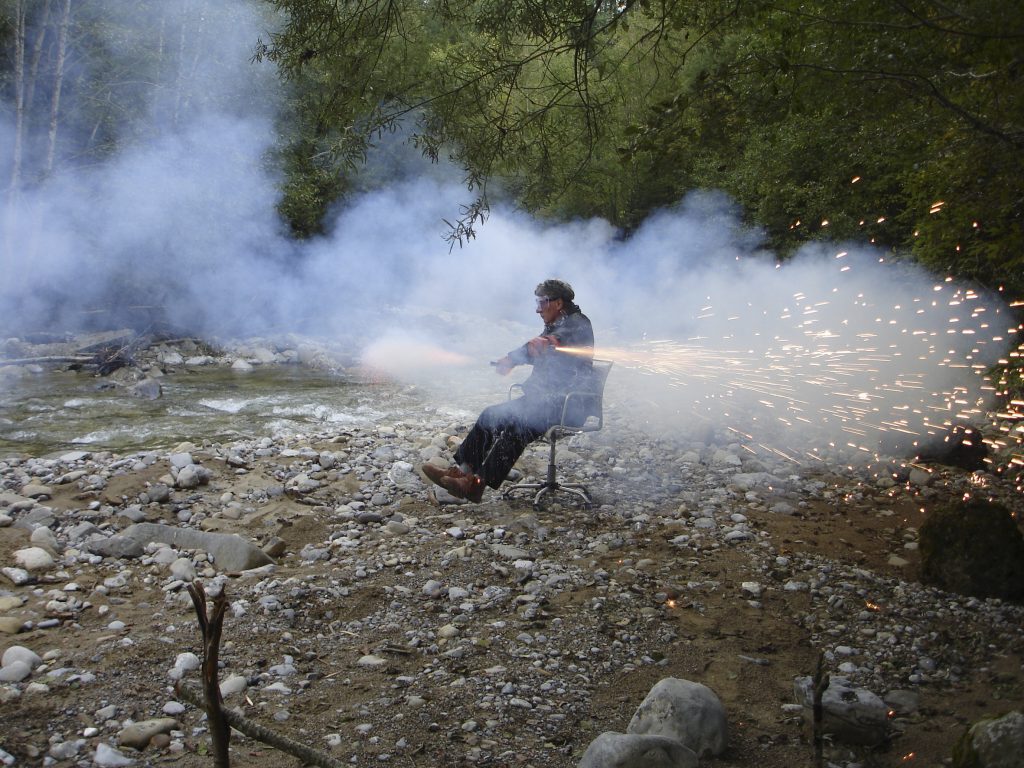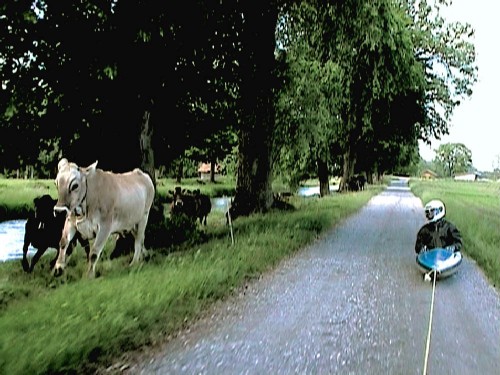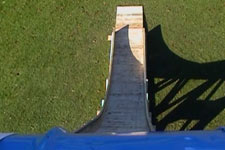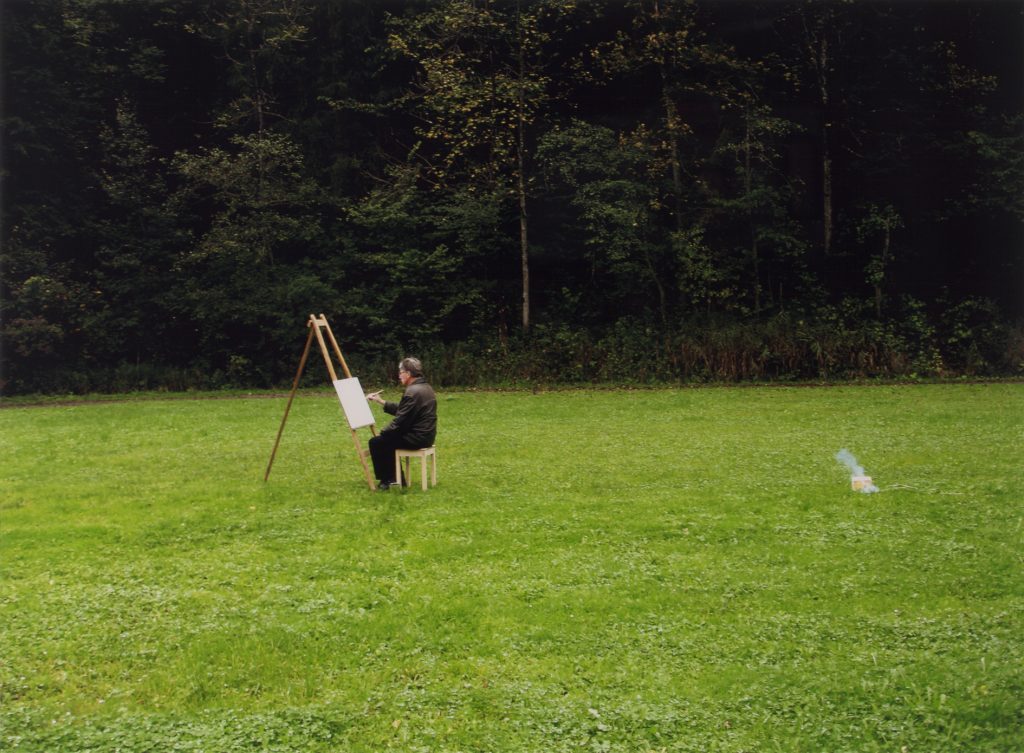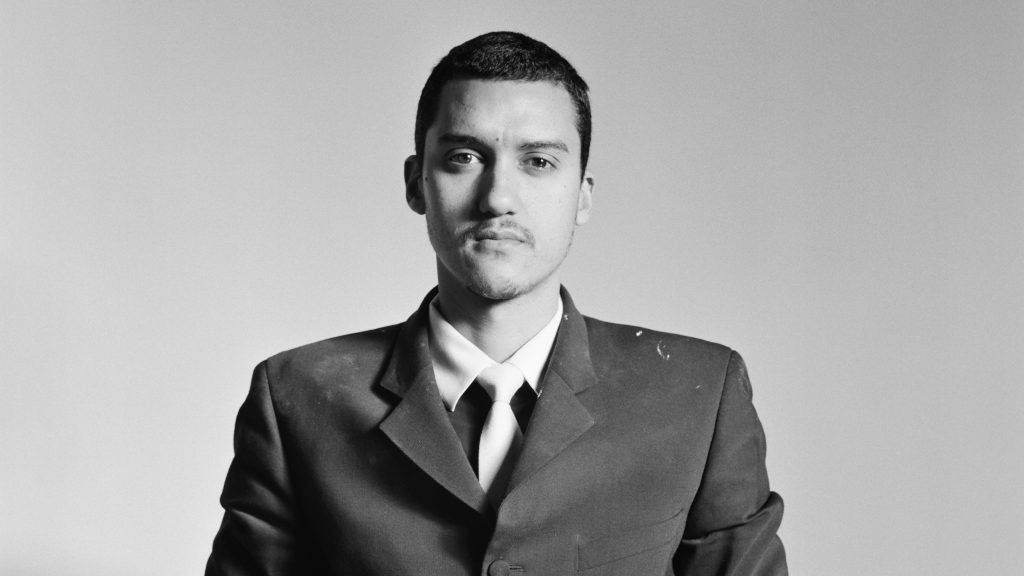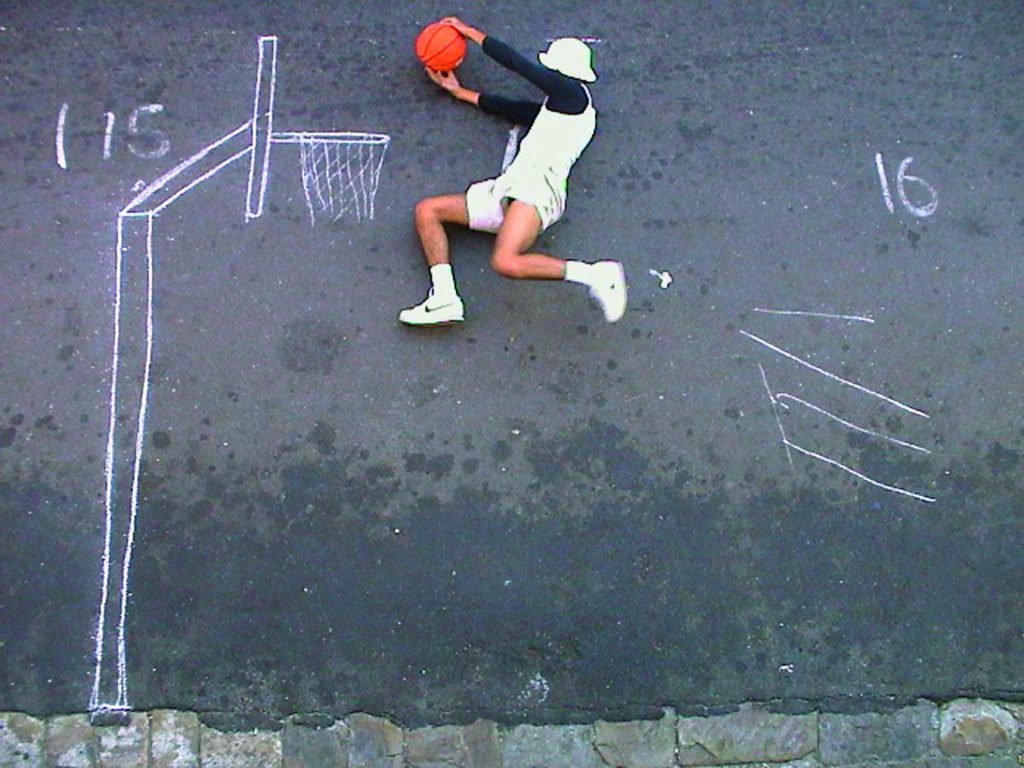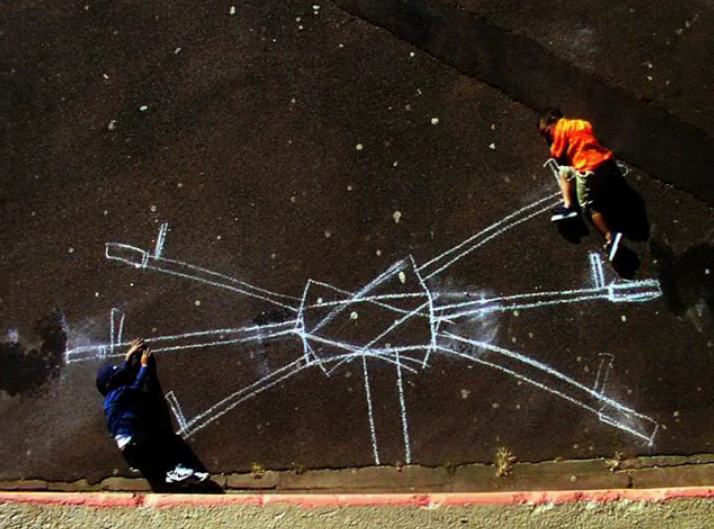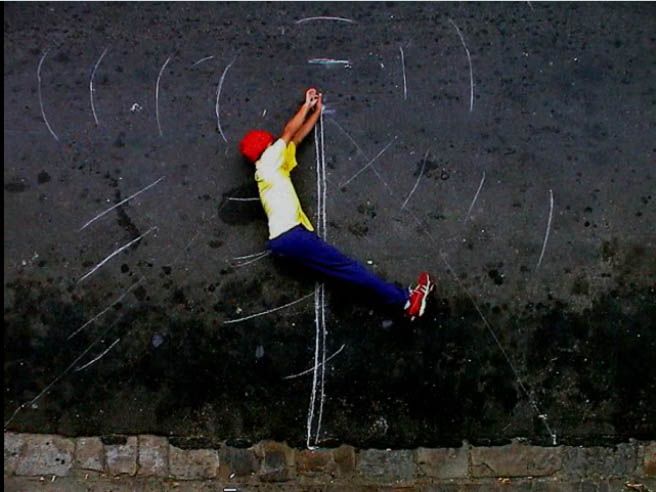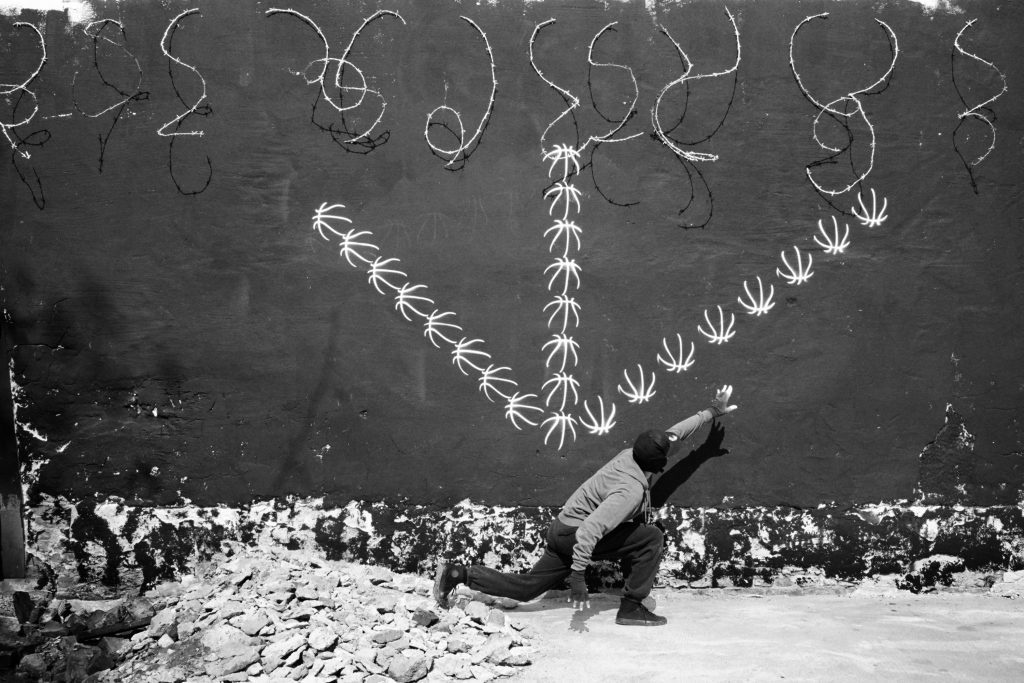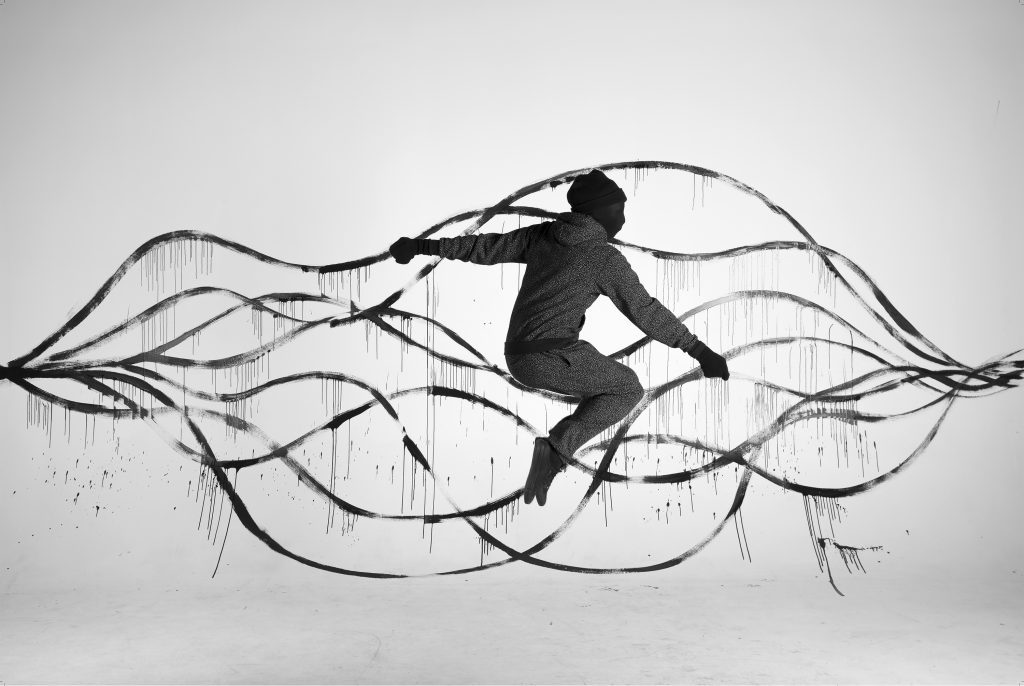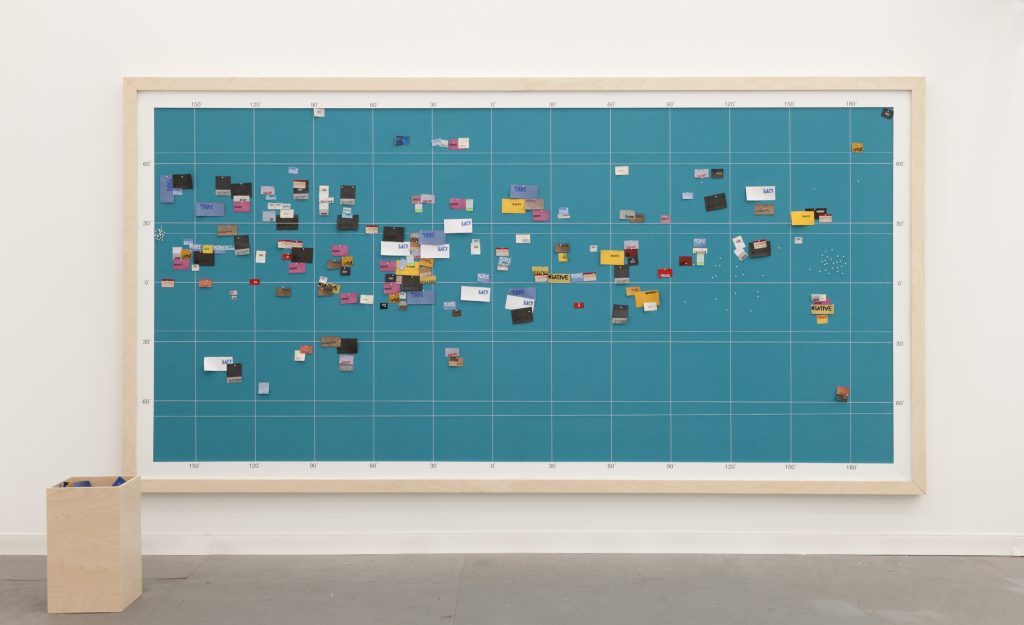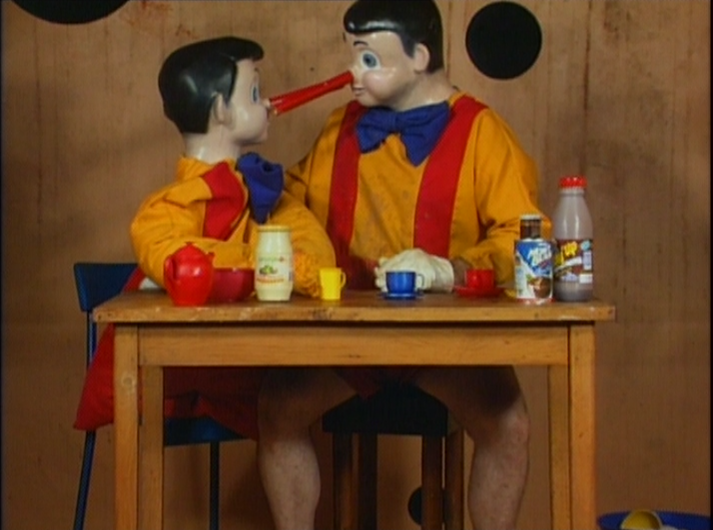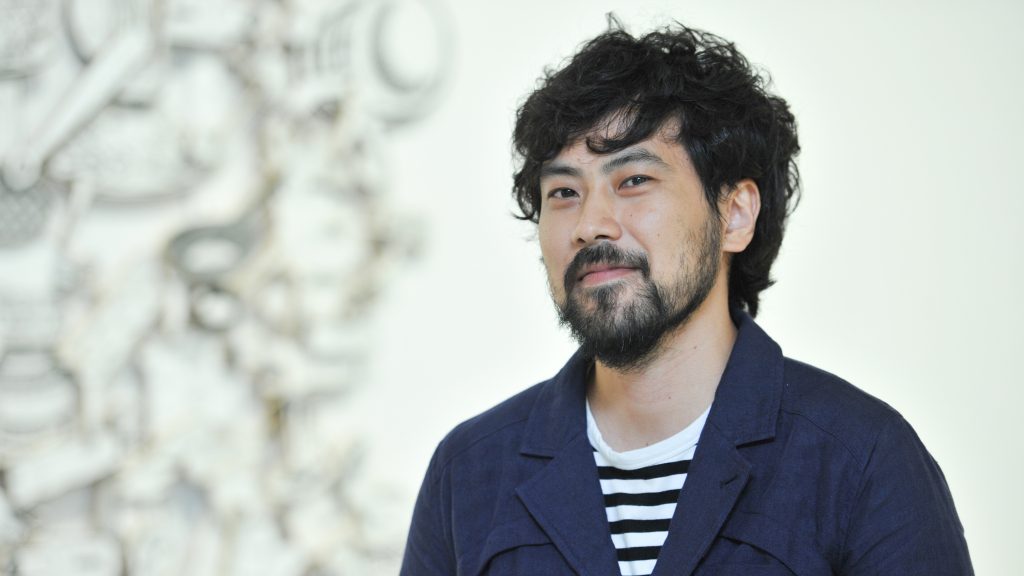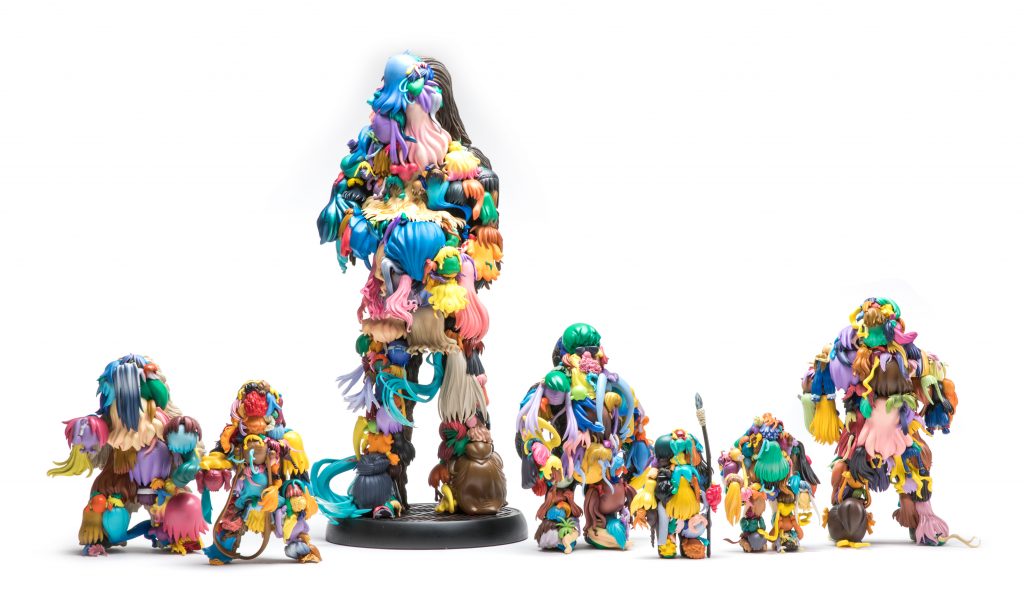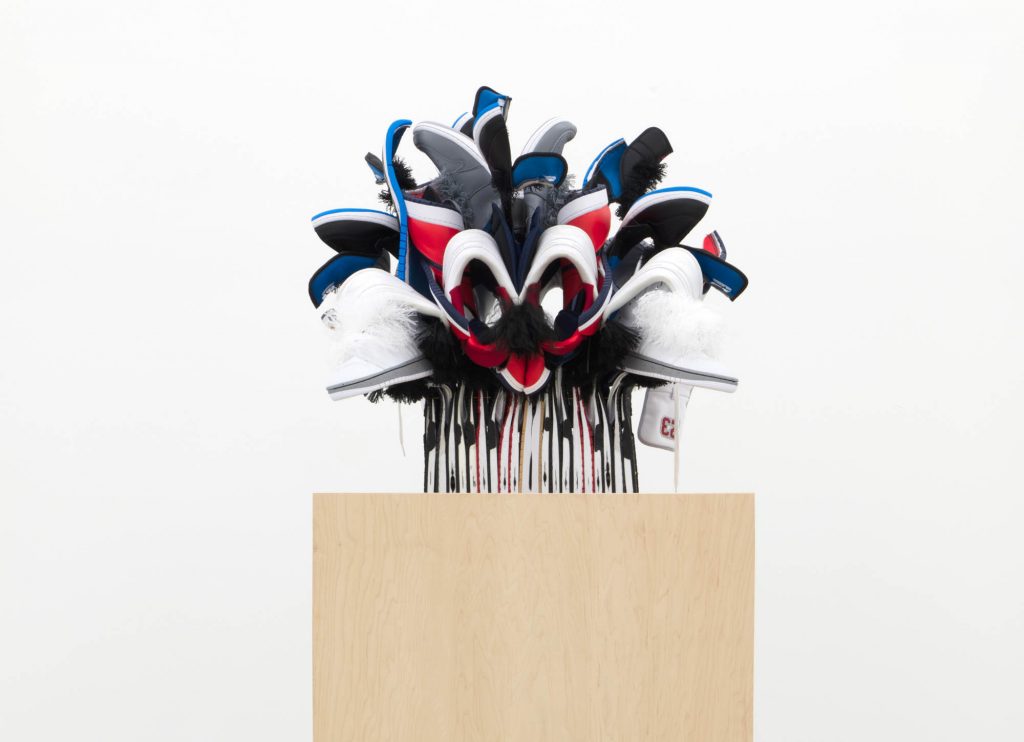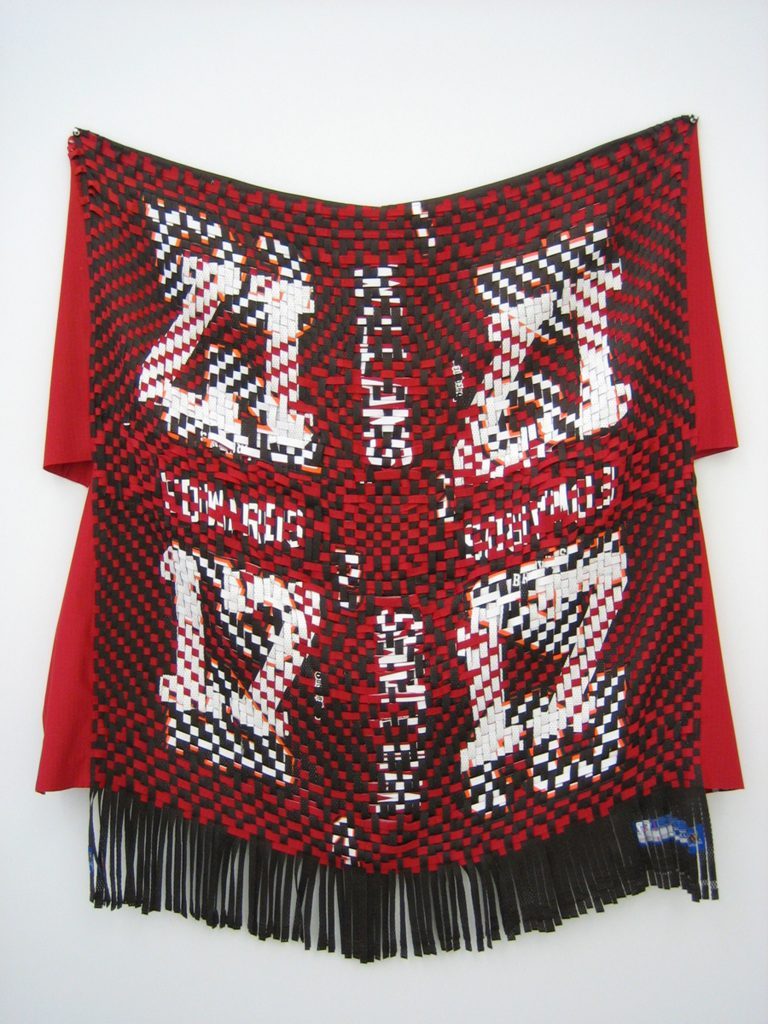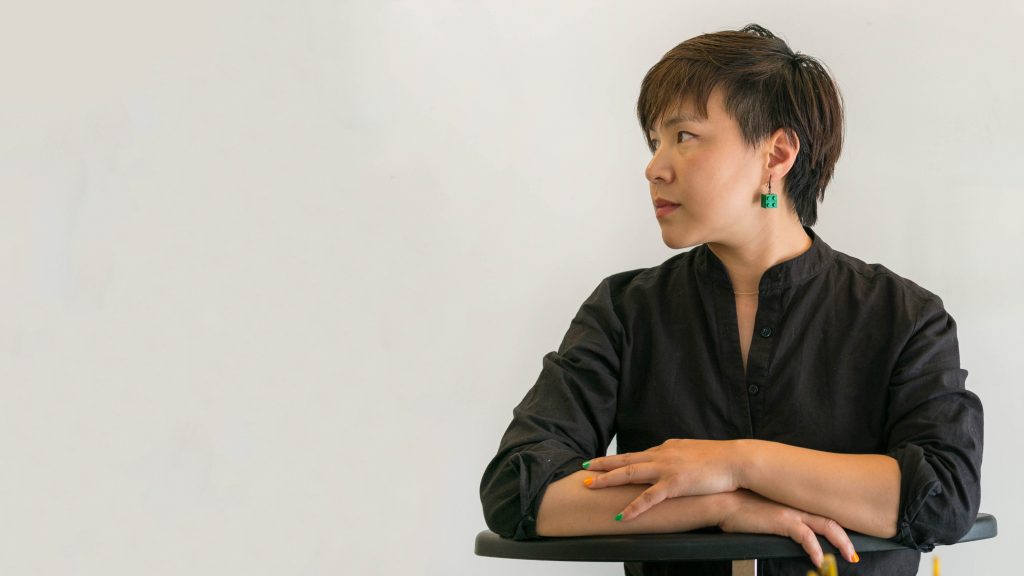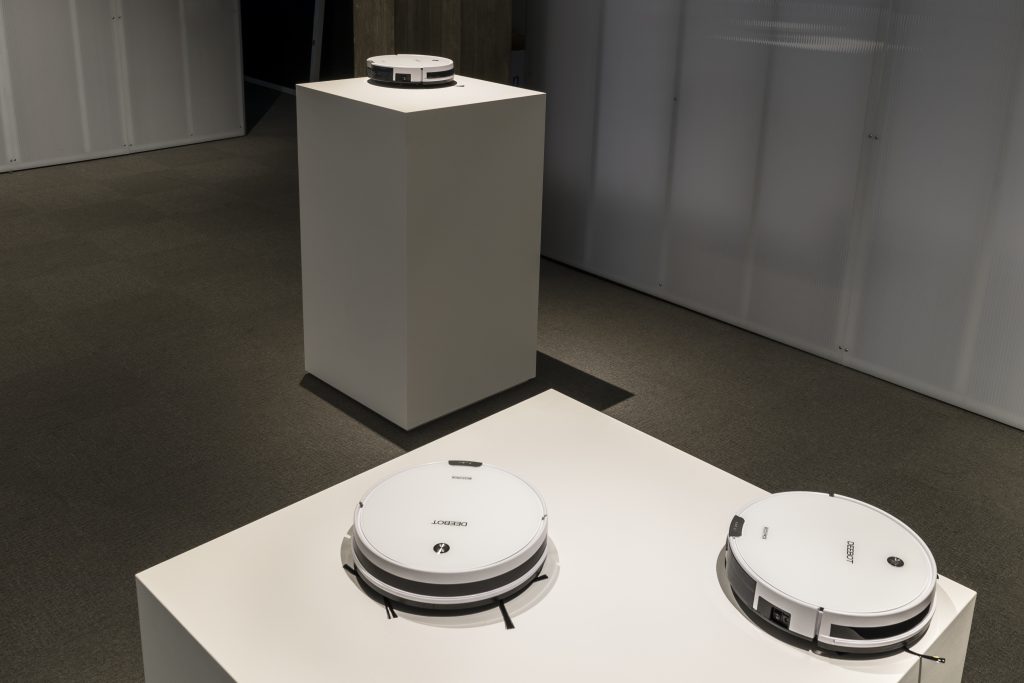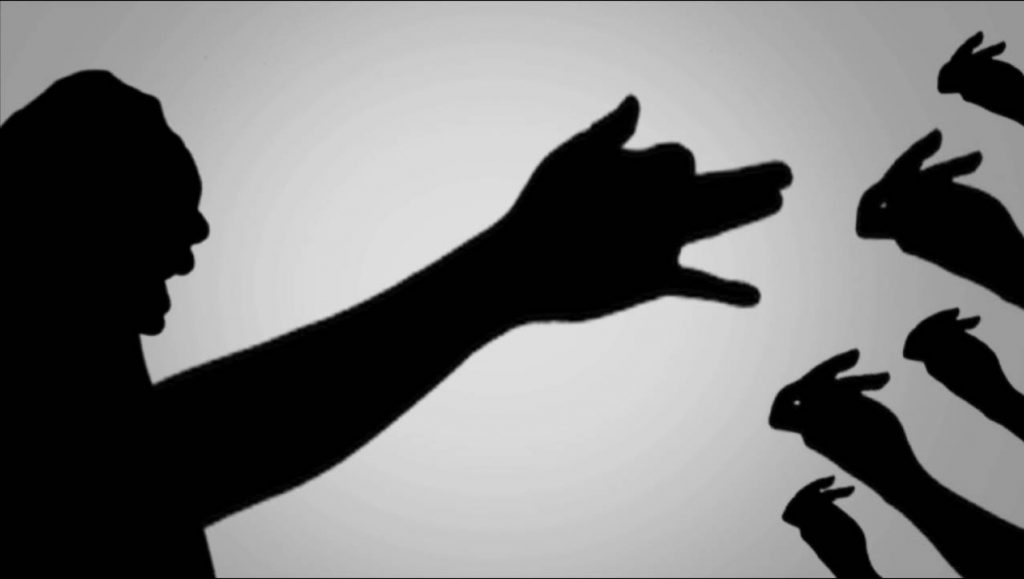When um . . . without noticing I um . . . I realized that I was carrying my bear, which is right there, and it just meant a lot the memory. And I became very interested in the relationship of . . . that we had with materials at some point and all of a sudden I realized the relationship I had with this one. But at the same time, not only as a bear of what it meant as a bear but the . . . also the fact that it was just a bear, just a thing, and it was as a relationship to this one object that meant a lot more but by the end it was just a thing. So . . . getting very interested about that, I became very interested in the relationship we have with objects in general and then . . . investigating myself as well because I still wouldn’t even dare to use him or whatever. It just made a lot of sense to me to work with a material that would represent us . . . I found that in every culture or in . . . it’s just like an icon, like an archetype. So I guess that’s how I ended up with the bears. And then it just like, everything just started falling into place. The relationship I have with animals in my personal life maybe, sometimes, might have something to do with it.
I’m going to cry.
Return to the artist page.

